Suzhou Xiangcheng, a vibrant and beautiful place with hidden elegance
Fragmented thoughts written before
Suzhou has passed by many times, but it has always been a passing traveler rushing in and out, never stopping to savor it. This time, I arrived at the Xiangcheng in Suzhou, slowed down my pace, let go of fatigue, and felt it carefully. This experience made me realize that it is a place full of beauty, elegance, and vitality, a perfect fusion of ancient and modern, and a place that overflows.
here,
With a fierce collision of ancient charm and modernity,
here,
With the beautiful scenery of the new countryside,
here,
Hotels and homestays, where a hundred schools of thought compete and a hundred flowers bloom,
here,
Food and scenery have the same aesthetic value,
here,
With a historical past and the sediment of time,
Also,
People's yearning for a better life~~~















Well, yes, I really like Suzhou, Xiangcheng, everything here, and this place. So, let's get closer to her with me!
Suzhou Imperial Kiln Golden Brick Museum
Before arriving at the Suzhou Imperial Kiln Golden Brick Museum, I only learned from online sources that this type of brick, called a golden brick, is not actually made of gold, but rather because it is expensive. One brick is equivalent to one or two gold coins, and because it is specifically provided for the wealthy and noble people in the capital to build houses, the homophonic sound of the capital is equivalent to gold, it is known as "golden brick". The reason for its high price is due to the uniqueness of the materials used and the complexity of the processes. From selecting soil, making, polishing, becoming a tool, and using it, a series of complex and professional processes are needed to create a golden brick: its fine particles and texture. Dense, knock to make the sound of gold and stone.


The guide who received us was a capable young man who, with his humorous and interesting way of explanation, instantly brought us back to the past and gave a detailed explanation of the entire formation, use, and transportation of the golden bricks. He spoke in an easy to understand and very exciting way, unlike other museum guides who simply read from book to book. Instead, he told the complete story of a golden brick based on his own understanding, interspersed with historical and cultural elements, which made everyone interested.

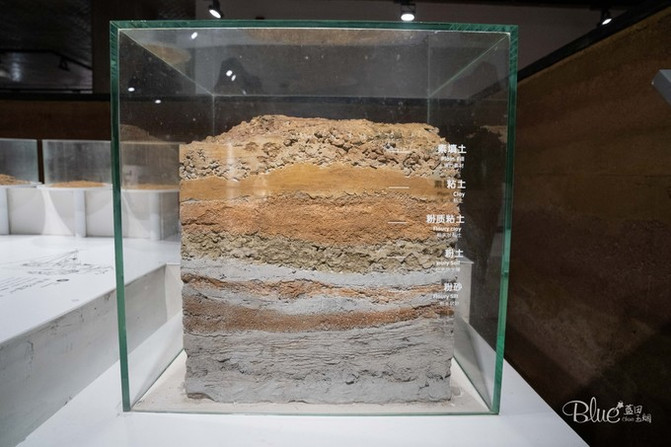

This museum is divided into:
The main hall, ruins park, cultural and creative experience hall, contemporary art exchange center, etc., are usually visited by tourists starting from the main hall.
The main hall progresses layer by layer through various exhibition methods such as cultural relics display, scene restoration, technological simulation, and interactive games. Through the three major exhibition halls of "opening objects - the cultivation of a brick", "becoming objects - the journey of a brick", and "using them - the era of a brick", it vividly reproduces the process of refining imperial kiln gold bricks from yellow clay by the Yangcheng Lake to the highest hall of the dynasty.
(1) Kaiwu - Practice with a Brick: The first exhibition hall is paved with yellow mud, and through a timeline, it introduces the entire process from soil to brick making;
(2) The Journey of a Brick: The Second Exhibition Hall, centered around a transport ship, showcases the spatial transfer of gold bricks transported from Xiangcheng to the capital city through the Beijing Hangzhou Grand Canal and transport ships
(3) Zhi Yong - The Era of One Brick: The third exhibition hall showcases the collection of Ming and Qing royal gold bricks and their usage range through a grand array of gold bricks.



The Suzhou Imperial Kiln Golden Bricks are displayed in the main hall for tourists to experience. We all went to touch them, and not to mention, the feeling when touched is really delicate and smooth, with a warm touch, like a piece of Daiyu. Although it is made of clay, when struck, it can emit a golden sound, which is crisp and pleasant, comparable to the sound of musical instruments.
Such a magical thing can only be produced in Lumu Town, Suzhou. The reason is that these golden bricks can only be fired from the soil around Lumu Town and Yangcheng Lake, which is high-quality yellow sticky soil. Lu Mu's rice is the most plump and crystal clear rice in Jiangnan. As the saying goes, good soil makes good rice.



There is also a replica brick kiln in the main hall, and the entrance is particularly narrow. Even skinny girls have to turn sideways to enter. A person with a full physique like me needs to turn sideways to enter, but I was ridiculed by my friends. My heart is filled with frustration! But inside, it was really eye-catching and amazing, it could be said to be so spacious.
To burn gold bricks, a large kiln is required, but only the core of the kiln can be used for firing. Therefore, each kiln can only produce about one hundred gold brick blanks. And the bricks made in advance should have no bubbles inside, no fine lines or cracks on the surface, and after several months of drying, this ordinary mud brick may become a smooth and smooth golden brick.
Kiln fire is a slow fire, first burned with wheat and firewood, rice straw, and luxury bran for one month, then burned with sliced firewood for one month, and finally burned with pine branches for forty days, including one month of Wu Song, one month of Kunqu Opera, and forty days of Suzhou Pingtan.
Selecting mud for several months, practicing mud for several months, making billets for several months, and firing for several months. It takes more than a year for a gold brick to go from collecting mud to being discharged from the kiln, and then slicing and polishing it into fine gold bricks.





It is time, hard work, and wisdom that permeate it. Only then can we achieve the goal of turning soil into gold. The golden bricks are delicate and beautiful, smooth and wear-resistant, not slippery or wet. The golden bricks pave the ground, which can withstand the trampling of thousands of people and block the rise of moisture. The golden bricks can set off the palace more magnificent and majestic, and the temples more magnificent and magnificent.
It was Kuai Xiang who brought the golden bricks to the capital, and it was the character of the golden bricks that changed the way people called them from "Jingzhuan" to "Jinzhuan". It was Emperor Yongle Zhu Di who named the kiln where the golden bricks were fired "Yuyao".
The Golden Bricks decorate the Taihe Hall, Zhonghe Hall, Baohe Hall, Qianqing Palace, Kunning Palace, Tiananmen Gate Tower of the Forbidden City in Beijing, and the Prayer Hall of the Temple of Heaven. It decorated the Suzhou Garden Hall, the Sanqing Hall of Suzhou Xuanmiao Temple, and the the Shakya ManiHall of Hanshan Temple.
Now, in Lingyin Temple in Hangzhou, Confucius Temple in Nanjing, and Chinese style antique architecture in countries such as the United States, Singapore, Japan, Canada, and Australia, Suzhou imperial kilns and golden bricks are all showing their brilliance.




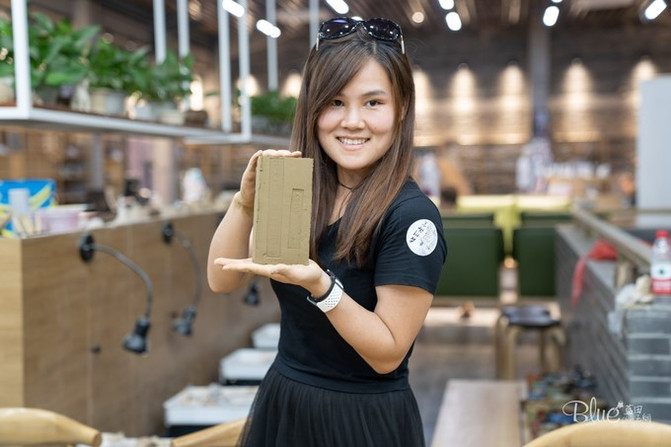
We experienced how to make golden bricks at the Cultural and Creative Experience Hall. Under the guidance of the teacher, the first step is to knead the clay used to make the golden bricks, which involves forcefully and repeatedly hitting and kneading the soil to remove all the air inside. This is a time for practicing hand strength, but excessive force on my palms caused a slight pain in my entire wrist and palms the next day; The second step is to put the soil into a wooden mold box and repeatedly scrape it flat. This step is also to better remove the bubbles, because during the scraping process, the soil bubbles will appear, and small holes will appear in front of you. If there are many small holes, you must knead the soil again. If there are not many small holes, you can directly fill them with soil; The third step is to make the golden bricks into embryos, remove the mold, and print the logo you want. The cultural and creative center will provide the previous seal template.
Overall, the experience was profound, and I learned that the production of gold bricks is not easy and the price is not expensive. 80 yuan per person does not take the bricks, and 100 yuan per person takes the brick blanks. Because I had to take a plane, I gave up taking them. Let the brick blanks return to earth and let the next destined person experience it again.
Feng Menglong Village
Fengmenglong Village, formerly known as Xinxiang Village, is located in Huangdai, Suzhou City. The birthplace of Feng Menglong, a master of folk literature, was officially renamed as "Feng Menglong Village" to commemorate his birthplace in Xinxiang Village. Feng Menglong Village is the former residence of Feng Menglong, who is known as the pioneer and leader of Chinese vernacular novels.
In addition to writing poetry and prose, Feng Menglong's main focus is on writing historical and romantic novels. His own collection of poems no longer exists, but the thirty works he compiled have been passed down, leaving behind an immortal treasure trove of Chinese culture. In addition to the well-known "Three Words", there are also many works such as "New Records of Nations", "Supplement to the Three Suiping Demon Biographies", "Romance of Martyrs from Ancient and Modern Times", "Guangxiao Mansion", "Wisdom Tank", "Overview of Ancient and Modern Times", "Taiping Guangji Banknote", "Love History", "Mohan Zhai Dingben Legend", as well as many works on interpreting scriptures, chronicling history, collecting customs, and compiling records. Among them, the selection of "Three Words" has the greatest and widest influence.
"San Yan" is a collective term for "Yu Shi Ming Yan", "Jing Shi Tong Yan", and "Xing Shi Heng Yan". At the beginning of its creation, "Yu Shi Ming Yan" was named "Quanxiang Ancient and Modern Novels", but later changed its name to "Yu Shi Ming Yan" in order to align with the meaning of the three characters.
Feng Menglong only became a tribute student at the age of 57 and served as the county magistrate of Shouning County, Fujian at the age of 61. He reduced corv é e labor, reformed the governance of officials, clarified litigation cases, eliminated bad habits, rectified academic atmosphere, promoted benefits and eliminated harm, and created a peaceful and prosperous Shouning for the people! The record at that time was that the prison cell was always empty, and the guards were not bothered to report safety. In summary, Feng Menglong was really a clean and honest official!
Feng Menglong's life story was also adapted into a TV drama, starring Yan Weiwen.






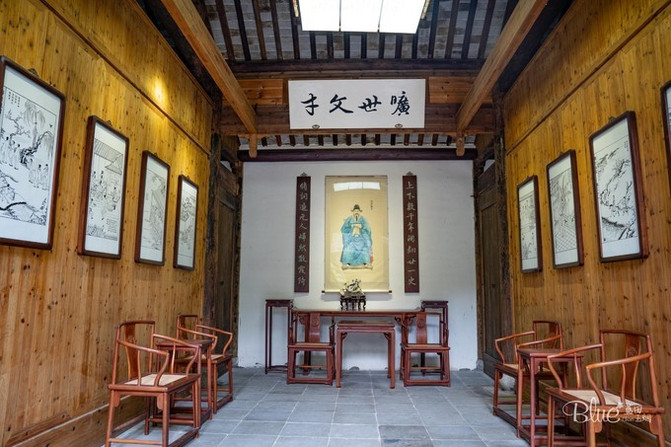






Feng Menglong Village is very beautiful, it's really too beautiful. The white walls, black tiles, blue sky, and white clouds, combined with a patch of flowers and lush green trees, make people reluctant to leave. The aunties here sell various vegetables they grow on the roadside, including pumpkins, sweet potatoes, winter melons, and some unknown melons. They are absolutely pure green and pollution-free. You really need to buy a few of these melons to taste. The beautiful and picturesque Feng Menglong Village, with its light clouds and gentle breeze, has a long history.

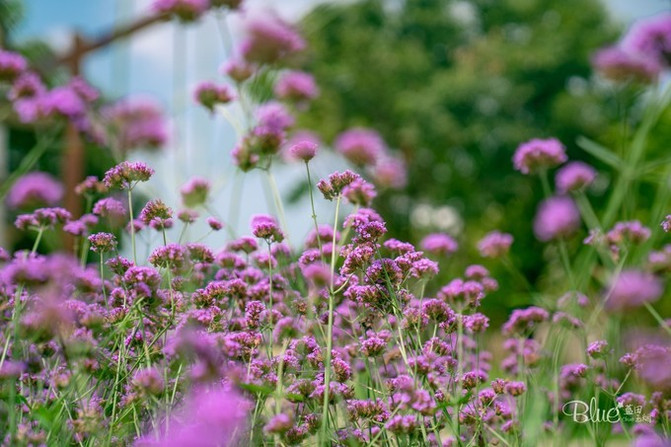




Feng Menglong Academy is also a place worth visiting. There are many Feng Menglong books for sale here, as well as many cultural and creative products. Some of the products are very exquisite and beautiful, with unique craftsmanship and excellent craftsmanship.
You can also try rubbing printing with the staff of the academy, the oldest copying method, which surprised everyone's horizons.
There are also some ancient farming habits here, such as the oil press workshop, which replicates the previous oil press mode. A large wooden oil press is used to manually add stones and collide heavily, finally producing oil and filtering it into edible oil. This process is performed by specialized personnel, which is very exciting, especially when he picks up the large stone and uses inertia to hit the oil press pile, the dull and full force collision sound is too shocking, and his head buzzes for a moment, haha.


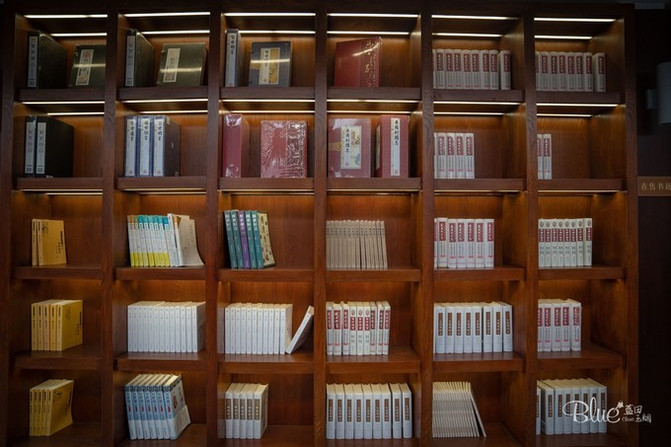




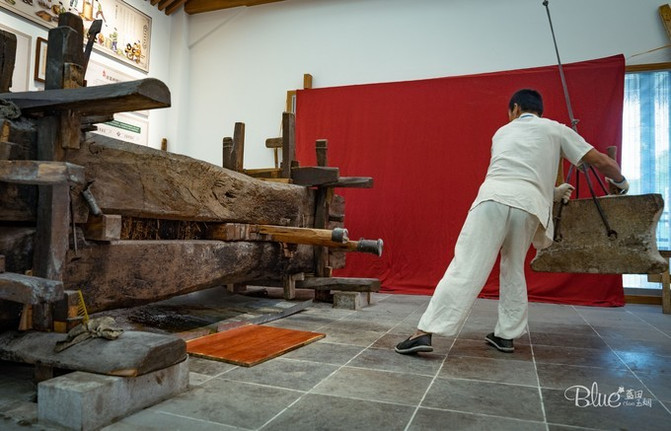
What fascinates me the most is the lotus pond here. This beautiful and chaotic place is really like a fairyland in the Yaochi Lake, as beautiful as heaven. Large patches of lotus flowers, pink white and red, either pure and flawless, pink and flying, or white as a base, with pink tips or a plump bud, standing tall and graceful like a shy girl.
Those white walls and green tiles are faintly visible among the lotus leaves, paired with blue sky and white clouds. It's really breathtaking. Suddenly, I envy the villagers here. They can live in such a beautiful place. I really envy others. Is there still a shortage of wives in this village? I'm coming, I'm coming.



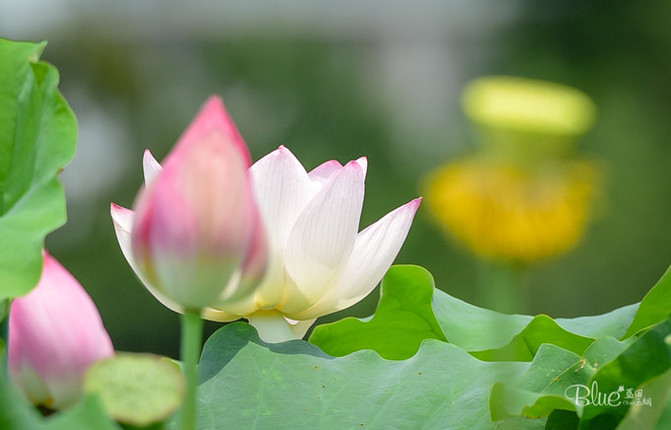


There is also a green grape in Fengmenglong Village, which can be said to have killed many grapes in a flash. The taste is excellent, each one is full, with thin skin and sweet flesh, sweet to the bone marrow. We tried it, but only tasted one because the boss didn't give us the second one. The boss was obsessed with money, but it was indeed delicious. Not only did it have the sweetness of grapes, but it also had the fragrance of roses. When combined, it was really great. The place where this boss sells grapes is right next to Feng Menglong Bus Station, with a price of 15 yuan per kilogram. It's not for shipping or express delivery. If you have to buy it yourself, go buy it. The boss is so arrogant! Whether you buy or not is up to you. Whether I sell grapes or not is up to me! Boss, I helped you with free promotion. Would you like to give me grapes as a thank you? ha-ha.






Wuzhen Taoist Temple is located in the southeast of the Shengli Island commercial district in Xiangcheng District, Suzhou City. It is a secluded place for cultivation in the prime area of the bustling city, with Renmin Road extending northward, Yuyao Road west, and Yangchenghu West Road north.
According to the Suzhou local chronicle "Lu Tomb Annals", the Wuzhen Taoist Temple was first built in the third year of the Chunxi reign of the Song Dynasty (1176), and has been around for more than 840 years. It mainly worships the Eastern Jin painter Gu Kaizhi. According to legend, in the year of Yixi of the Eastern Jin Dynasty (405-418), the land of Wuzhong suffered from a severe drought that had not been experienced in a century. Gu Kaizhi, a soldier who led his troops by, felt compassion and used military provisions to aid the starving people. As a result, he was harmed by treacherous rumors and even demoted from his official position. After receiving the news, the common people of the four townships and eight neighbors felt grateful for their kindness and built a "General Temple" with thatch. From then on, Gu Kaizhi was worshipped as the God of Land by the local people and a temple was built to worship him.





The True Taoist Academy was the retreat of Song scholar He Zhongli (Taoist name: Suo Yi Zhen Ren). Legend has it that for the suffering of the common people, he prayed for Jian Yi Suo and boiled his clothes like a god. Inside the academy, there was a stone tablet with the three characters "Shentong An" written by Emperor Xiaozong of the Southern Song Dynasty. In the first year of Ming Hongwu (1368), Ye Daoyuan repaired it; In the sixth year of the reign of Emperor Shun of Tomorrow (1462), Taoist Tong Shouchu of Xuanmiao Temple resumed his studies; In the first year of Ming Chongzhen (1628), Niu Daolu was repaired again.
According to Wu Kuan's "Record of the Restoration of Wuzhen Taoist Academy" during the Ming Dynasty, in the 14th year of the Chenghua reign (1478), Wu Kuan passed north of Qimen and saw Wuzhen Taoist Academy. Zhang Jiayu (Wu Mensheng), a student of the government, left the academy to study with Su, and Wu was unable to attend.
Tong Shouchu, with the support of his family, raised funds to build the Zhenwu Hall. Du passes through the pavilion, talks about the cultivation of a hall, and is also known as a secluded and elegant scenic spot outside. Those who pass through the northern gate of Su by the great scholars from all directions will never fail to visit.
During the reign of Emperor Kangxi of the Qing Dynasty, Taoist Tian Hongke and Li Ren Ouyang Gang restored and expanded the old site, and raised funds to build the Zhenwu Hall and Yuhuang Pavilion. After Emperor Qianlong of the Qing Dynasty visited the General's Temple during his southern tour, he wrote a plaque with the inscription "Eternal Heroic Style". During the reign of Emperor Guangxu of the Qing Dynasty, the General's Temple was renamed as the Wuzhen Taoist Academy. Qingpeng Dingqiu has the "Inscription on the Reconstruction of Wuzhen Taoist Academy" (currently in the collection of Suzhou Museum),
After the liberation, the courtyard was used as a grain depot, so it was well preserved. There are still more than 20 main halls, side halls, and wing rooms. In front of the main hall, there is a courtyard, and in the back, there are four osmanthus trees. To the north is a row of main houses, with a pair of granite lions in front of the houses. In 1986, the People's Government of Wu County allocated 5000 yuan to repair the main hall and side hall, and erected a stone tablet called "Wuzhen Daoyuan" on the west side of the main gate, which was listed as a county-level cultural relic protection unit. In 1997, with the approval of the People's Government of Wu County, it was designated as a place for Taoist activities. After Wu County was abolished and established as a district, Wuzhen Taoist Academy was placed under the jurisdiction of Xiangcheng District.



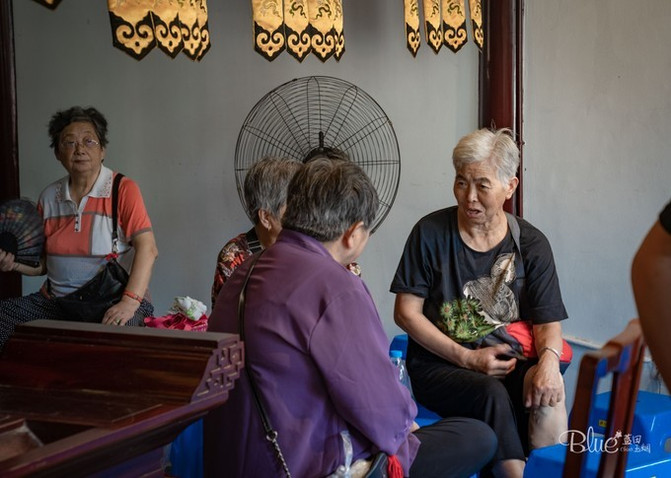



In 2006, the first batch of Wuzhen Taoist temples were identified as fixed religious sites in Suzhou City. In 2009, Xiangcheng District renovated the "Wuzhen Taoist Temple" to meet the religious needs of believers. In the restoration project, limited land resources were fully utilized, with Taoist culture as the theme, combined with historical evolution and local customs, highlighting the unique architectural style of Suzhou. In the best integration of Taoist culture and modern urban civilization, a distinctive religious activity venue was created.
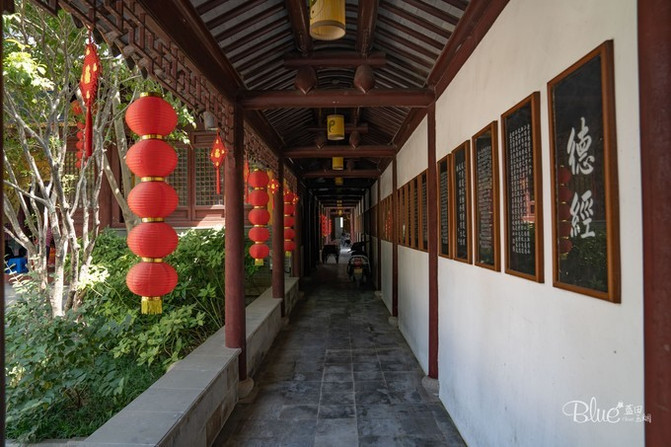




The expanded Wuzhen Taoist Temple covers an area of approximately 22.5 acres, with the main mountain gate facing east, meaning "purple air comes from the east". Apart from the mountain gate, there are also seven southfacing halls, with the Jade Emperor Hall, Hejing Hall, and God of Wealth Hall as the central axis. To the east are the Cihang Hall and Wenchang Hall, and to the west are the Lvzu Hall and Yuanchen Hall, which can greatly meet the religious needs of the surrounding believers. The overall layout of the monastery is orderly, with lush greenery, no admission fees, and no commercial atmosphere. It is a quiet place in the hustle and bustle of the city, as well as a home for people to cleanse their souls and enhance their spiritual cultivation.
Lianhua Island
Lotus Island is located in the northeast of the ancient city of Suzhou, surrounded by water on three sides. It is named after its lotus like appearance embedded in a lake. The entire island covers an area of 3.2 square kilometers, with over 300 households living on the lake and crabs. The water here is vast and the water quality is particularly good. It is the birthplace of authentic Yangcheng Lake's clear water hairy crabs and is known as the "hometown of hairy crabs". The people on the island are simple and the ecology is natural, maintaining the intact appearance of the Jiangnan fishing village.
With the rise of rural tourism, more and more tourists have come to visit, forming an industrial service chain integrating food, housing, tourism, entertainment and shopping. It has been successively rated as one of the "Top Ten Ecological Tourism Villages in Suzhou City", "Four Star Rural Tourism Area in Jiangsu Province", "Ecological Tourism Demonstration Zone in Jiangsu Province", "Top Ten Rapeseed Flower Viewing Places in East China", and "China's Most Beautiful Green Ecological Tourism Village".
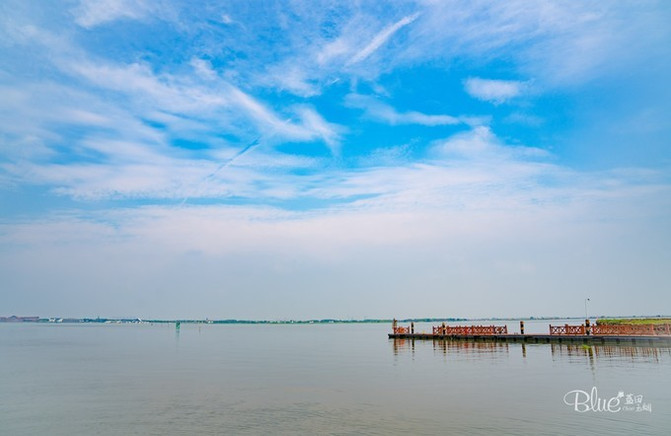







Lotus Island is located in the center of Yangcheng Lake. It is said that the island's shape resembles a lotus flower, but more like the petiole of a lotus leaf. There are many local crab farms and restaurants on the island, and the most famous one is the Yangcheng Lake hairy crab. Every autumn, when hairy crabs are on the market, tourists from nearby cities in Jiangsu, Zhejiang, and Shanghai rush to eat Yangcheng Lake hairy crabs. While eating crabs, they also enjoy the pastoral scenery of the island and the scenery of Yangcheng Lake, which is definitely a satisfying farmhouse experience. One way to go to the island is to go to the Lotus Island Pier in Yangchenghu Town. The crab shops on Lianhua Island usually only open when the hairy crabs are on the market. When you go to the island, you can enjoy the scenery. In March and April, you can enjoy rapeseed flowers, while in September and October, you can feast on Yangcheng Lake hairy crabs.
There is a saying that goes: "If the crabs in Yangcheng Lake are not good, why live in Suzhou in this life?" Although there is heaven above and Suzhou and Hangzhou below, without the delicious taste of hairy crabs, our city of Gusu may lose some luster. Remember to come to Suzhou, and if the time is right, don't miss the hairy crabs!









Lianhua Island, also known as the most beautiful pier and ferry in China, is a place where many young ladies come to take photos. Therefore, if you are not careful, you will encounter beautiful and popular young ladies and handsome young brothers in this place!
Suzhou Second Library
The Second Library of Suzhou, as a new part of the Suzhou Library, is located north of the ancient city of Suzhou and is the only library in the country with a large intelligent integrated library. By introducing the concept of rotating paper, a building with a book like structure has been formed, which is a large intelligent book library with a collection of 7 million books..








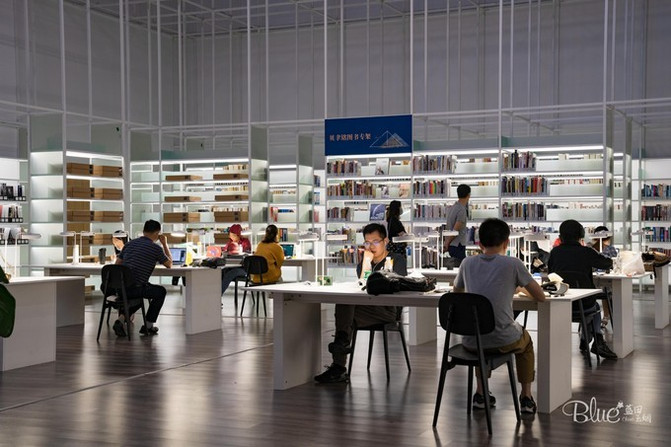
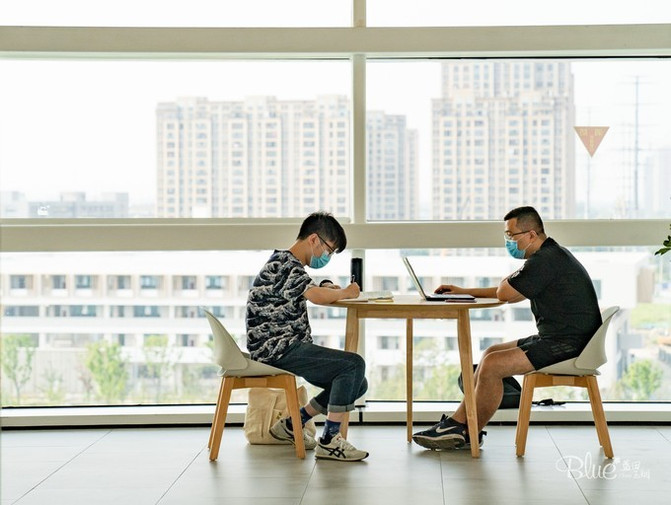


The Suzhou Second Library is located in Xiangcheng District, Suzhou City, with a total investment of approximately 480 million yuan and a building area of 45600 square meters. It was officially opened to the public on December 10, 2019, equivalent to two old Suzhou Library libraries. The service functional area includes five distinctive "in library" features: Children's Library, Suzhou Literature Museum, Music Library, Design Library, and Digital Technology Experience Museum. The supporting facilities of the second library, including the Book Fragrance Park and Book Fragrance Platform, were also put into use simultaneously on the same day.

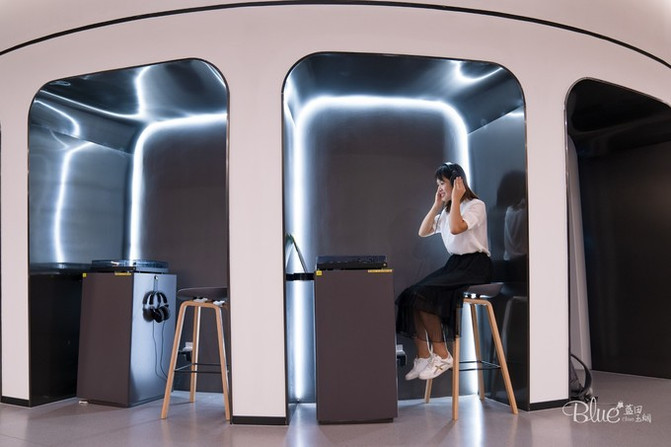


The public library service function area is concentrated in the southern area of the project. The literature storage and distribution function area occupies the first to third floors of the northern area of the project, and has built the first high-density library in China that maximizes and intelligently utilizes literature storage space, capable of accommodating nearly 7 million books. While saving space resources, we are the first in China to achieve intelligent management of library services. In addition, it also includes ancient book libraries, logistics centers, and collection and editing centers that meet national standards, to meet the needs of the operation of the main branch library system and the development of public libraries. The supporting service function area is distributed throughout the entire project, creating new highlights of cultural consumption through supporting service facilities such as multi hall digital cinemas, reader restaurants, cultural supermarkets, leisure book bars, etc., to meet the multi-level, diversified, and personalized cultural needs of various groups of people.






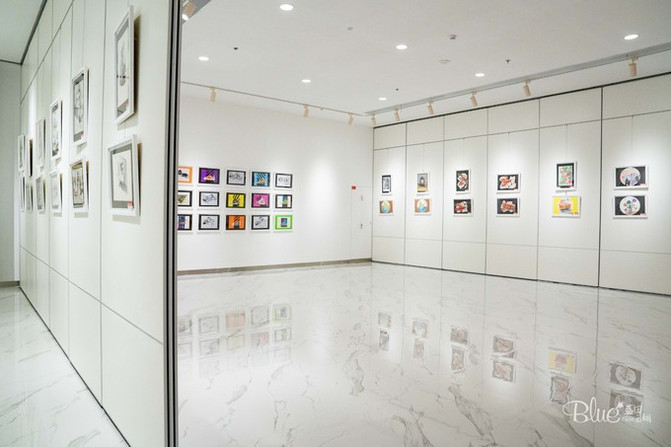


After the completion of Suzhou Second Library, four highlights and characteristics will be highlighted: creating the first large-scale intelligent book library in China, creating a "pleasant reading world" that children aspire to, creating a new platform for high-end information services, and creating a warm and comfortable "citizen study".
In order to adapt to the era of all media, Suzhou Second Library will no longer only provide books and reading facilities, but also transform into providing information and learning environments. This is also a development direction for future libraries to "support human knowledge and create an environment.". Suzhou Second Library has built the country's first high-density library that maximizes and intelligently utilizes literature storage space, capable of accommodating nearly 7 million books; At the same time as saving space resources, we are the first in China to achieve intelligent management of library services.
Vitality Island Night Market
I heard that the Vitality Island Night Market is very beautiful, so before we went, we first climbed a high and had a distant view. We arrived at the rooftop of a building next to the Vitality Island Night Market. This different perspective, like a god's perspective, really opened our eyes. We looked at the night view of Xiangcheng from afar and the Vitality Night Market up close, and then the cool night breeze blew. It was really enjoyable!

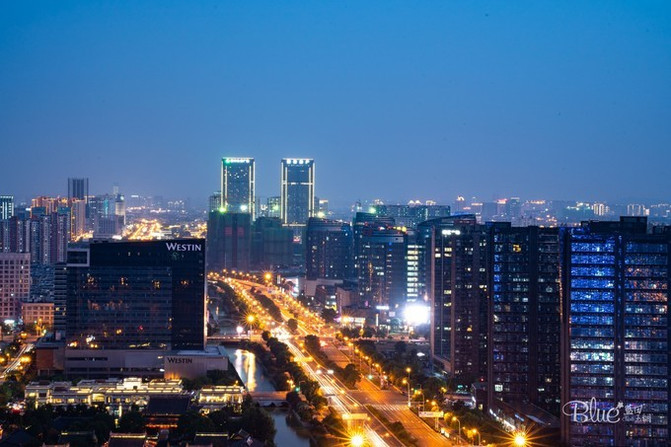


Xiangcheng's "Vitality Summer Collection" will last for three months! June 19th to September 27th, every Friday to Sunday evening!
It's very lively here, crowded and bustling. It's said that the stalls inside still need to queue up for a lottery to get their hands on, and the stalls are very scarce. Various entertainment activities are unfolding in full swing, and the most lively one we have seen is the Wusu Special Session. Just buy a bottle of Wusu beer and you can sit there listening for half a day. Different singers sing their own unique songs, either affectionately or passionately, all of which make the audience applaud, shout, and cheer.
Most of the people who come here are nearby residents. After dinner, they come out to cool off and chat, take their families out for a stroll, and buy some clothes, fruits, or a bowl of chilled mung bean sand. This summer, it's refreshing and lung nourishing.
I also saw many foreign and out of town tourists visiting the Vitality Island night market in Xiangcheng District, and buying some souvenirs to go back, which is also good.




Visiting the stalls on Vitality Island at night, taking a walk, and admiring the night scenery is really enjoyable. It seems that Vitality Island is going to become popular all over the country again.
We strolled around here and also found a key point, which is that the things here are really affordable, and the variety is very rich, each with its own unique features, and the prices are also very beautiful.
Peaches cost 10 yuan per kilogram, and Jingdezhen ceramics cost 3 yuan. The price is so affordable that it's tempting. I really want to buy all the cheap and beautiful items in the night market.
And the vendors here are very polite and of high quality. If you don't buy, just ask, they all answer with a smile. Even when I took pictures of the items at the booth, the vendors would smile and thank you: Thank you for taking pictures of our products so beautifully! These heartwarming words make people feel very comfortable to listen to, as if they are refreshing and refreshing like eating an ice cream popsicle.
After the epidemic, the vibrant night market in Xiangcheng District has revitalized the economy at night and provided people with an additional place for evening leisure. It's a great idea and approach!





Then we went to a barbecue restaurant next to the night market, named Chuan Daxian. It was a very foreign name, and the dishes were many and delicious. The emotions were strong, the wine was strong, and we drank this beer. We are all good friends.



Yuyin is located on the beautiful legs of Yangcheng Lake, amidst a lush forest without any directional signs. Follow the navigation to reach it smoothly. There is a simple shop sign hanging outside, without any complicated decorations, just hanging on the white wall in a refreshing way, giving a sense of returning to simplicity.
After entering the store, I found that it was like a unique and elegant garden style world, with lush grass and trees. Each private room was an independent building with strong privacy, perfectly fitting the "private" character of private dishes.









The private kitchen in this private room is also very grand, and each private room has an independent decoration style, with everything available inside,
There is a sofa, coffee table, and KTV to choose from.
Some private rooms also have oversized rest areas,
Even in the corner of the private room, there is a design of an open small kitchen, where one can feel an ultimate sense of nobility and relaxation.
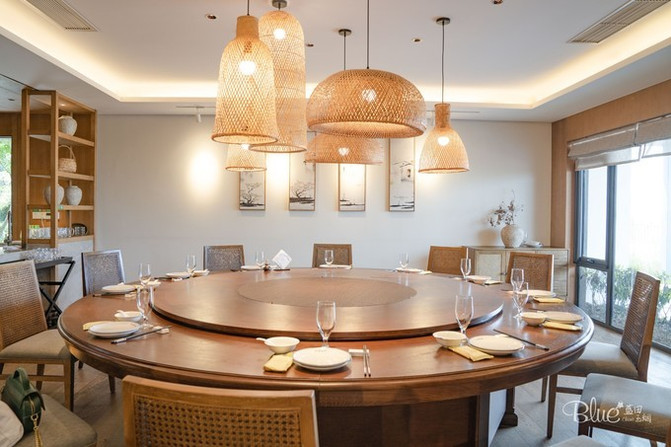


We ordered a table full of dishes, which could be described as having a perfect combination of color, aroma, and taste. From dish placement to taste, they were all considered top-notch delicacies.
Our menu:
Exquisite Eight Cold Dishes
Iced crayfish
Osmanthus chicken head rice
Pickled Chinese cabbage and Mandarin Fish
Qingfeng Shuangwei Shrimp
Noodle dragging June yellow
Steamed Eel Tube with Fresh Meat
Farmhouse Braised Old Goose
Yuyin Braised pork belly
Mustard flavored Octopus
Lotus Pond stir fry
Stir fried seasonal vegetables
Local Chicken Soup
Dim sum
Fruits
First, let's talk about the first few cold dishes. They are really ingenious. From the matching of utensils, the color matching of dishes and decorations, they are really pleasing to the eye. Then we can taste the various flavors of dishes. The tongue and stomach strips of salted Red-Stewed Duck are fresh and smooth, and the glutinous rice and lotus root are sweet and glutinous. Even the pickled cucumber is crisp and fragrant. The taste is just good. More salt is too salty, less salt is too weak.




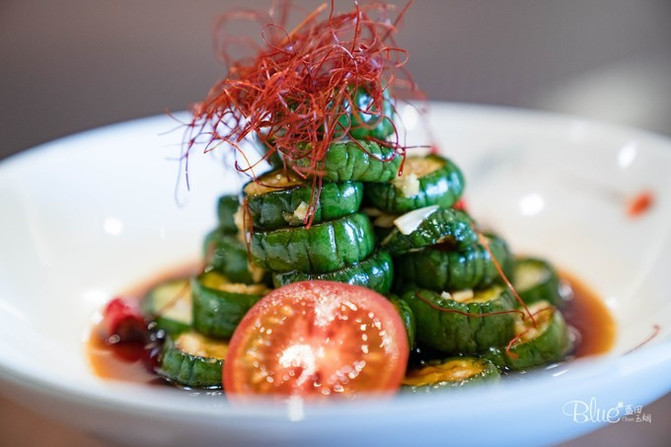
Iced crayfish, fresh and refreshing, different from those spicy crayfish. This type of crayfish that has been boiled directly in salt water can best taste its freshness because it is so fresh that it can be eaten without adding chili peppers. It's so delicious!


"When you're busy, don't forget the June yellow." The "yellow" in the June yellow refers to the full and golden crab paste in the crab's body, which is different from the mature hairy crab sawdust type paste yellow. The belly of the June yellow is filled with a flowing fat type paste yellow, which Suzhou people love the frivolous and soft fresh taste.



The braised goose and third line meat in the braised series are soft, sticky, and fragrant. The aroma of braised pork perfectly combines with the meat flavor, making it hard for everyone to stop eating; The fresh Yangcheng Lake's fresh river, fish and eel sections are too smooth, tender, and delicious; And there's also the lotus pond stir fry, which contains lotus root, water chestnuts, and chicken head rice wrapped in lotus leaves. It's extremely refreshing and can be said to be my favorite.






Don't forget to taste a bowl of local specialty chicken head rice, which is only available during this season. It is a white, round, sticky, pure green and pollution-free high-quality food that has a good warming and nourishing effect on the body.
This Yangcheng Fisherman's Hidden Private Kitchen dish is truly satisfying to the palate, and it is highly praised by us foodies. Coupled with the environment of his home, it is far from the bustling city, far from the hustle and bustle, overlooking Yangcheng Lake, breathing fresh air, and enjoying the charming scenery. It is truly an excellent experience. Of course, a good environment and good dishes determine its high price, starting at 500 yuan per person, but it is definitely worth it!
Shibazao, a land of fish and rice
The Shiba Zao Hotel in the Land of Fish and Rice is located in the beautiful Yangcheng Lake Resort Beauty Leg Scenic Area, with a business area of about 3000 square meters. It has indoor and outdoor dining spaces, can accommodate 120 tables, and can accommodate 800 people to dine at the same time. It is the largest farmhouse in the vicinity, with first-class hardware facilities, spacious and comfortable, quiet and warm, and an elegant and unique environment. It mainly focuses on farmhouse cuisine, integrating catering and entertainment as a whole.
The architecture of the Shiba Zao Hotel in the Land of Fish and Rice is mainly in the traditional Soviet style garden style, with strong local characteristics. The courtyard environment is beautiful, with lush flowers and plants. The eight large tanks in the courtyard are planted with water lilies, with a profound meaning. It covers an area of about 2500 square meters and has more than 20 private rooms. The indoor area is clean and hygienic, spacious and bright, with unique rural stove firewood and rice. It also provides all the local specialty farmhouse dishes and water, such as the Eight Immortals Yangcheng Lake hairy crabs. The air here is fresh, the scenery is beautiful, and the fishermen are kind and simple, warm and hospitable.
The Eighteen Stoves Catering Brand in the Land of Fish and Rice includes three stores: the Eighteen Stoves General Store in the Land of Fish and Rice, the Lotus Island Store in the Land of Fish and Rice (Lichen Mingsu and Benwei Restaurant), and the Eighteen Stoves in the Land of Fish and Rice (Mushang Chunse Agricultural Cooperative).



We went to the Eighteen Stoves Restaurant in Yangcheng Lake, a land of fish and rice with beautiful legs. As soon as we entered, we enjoyed Suzhou Pingtan. The beautiful melody was really beautiful, soft and charming, crisp yet gentle. The little girl's Pingtan was so beautiful that it made her ears pregnant. The environment is also particularly beautiful, with green tiles and white walls in garden architecture, which is beautiful, elegant, gentle, and simple.
It is said that these eighteen stoves really exist, and there are indeed eighteen stoves. In order to verify their authenticity, I even went to take a look. Hey, as soon as I walked into the kitchen, the eighteen earthen stoves were arranged in a row, with exclusive numbers written in front of each stove. This is really impressive! In order to verify that this stove is not fake, I led the supervisor to check behind the wall and found out that the master behind the stove was adding firewood inside! Verification completed, these eighteen stoves are all real guys, each playing their own role every day, cooking delicious dishes!



Let's talk about the dishes in the land of fish and rice. The vegetables are mainly seasonal vegetables, including small green vegetables, water spinach, buns, vegetables, cauliflower, potatoes, peas, fava beans, beans, watermelons, cantaloupe, luffa, etc. The meat dishes are mainly Yangcheng Lake hairy crabs and Yangcheng Lake fresh vegetables, all of which are green and fresh, delicious. Our menu is as follows:
Cold dishes: jellyfish, oil drenched okra, sour and hot lotus root, smoked fish, kelp knots, Salted duck egg, Maodou Festival, salted chicken
Hot dishes: salted river shrimp
Chicken head rice and shrimp
Braised Flatfish in Brown Sauce
Grass chicken soup
Braised Meat and Taro in Pot
Braised Intestines in Brown Sauce
Stir fried small green vegetables
Jiaobai edamame
Chicken soup bowl
Steamed June Yellow with Soy Sauce
Fruit Tree Roast Duck
Scallion oil and red diamond
Farmhouse Songgao
Scallion oil pancake
Su style red Noodles in soup
Fresh Fruit Platter
Every dish is great, my personal favorites are steamed June yellow with soy sauce, braised meat with taro in a pot, and fruit wood roasted duck. They are so delicious that I can swallow my tongue. Haha, if I eat them comfortably, I am very happy.











After being full of wine and food, I happened to come out and enjoy the golden sunset and the wisps of Jesus light in the sky. Not only did I marvel, being in Suzhou is like being in heaven, it's truly a place full of delicious food and beautiful scenery!
Yangcheng Xike Hotel
The Yangcheng Xike Hotel in Xiangcheng District, Suzhou is located in an excellent location with a large area. It is right next to Yangcheng Lake, the Beauty Legs Resort. The scenery is very nice, and the rooms are also very spacious. Each room has a balcony, almost all of which have a direct view of Yangcheng Lake. There are many outdoor activity areas, and there are several large lawns. Most importantly, fireworks can also be set off here. So, are you amazing!





The most thoughtful thing about this hotel is that there are several places for children to play, such as outdoor and indoor children's swimming pools, and various outdoor children's play places, such as playing in the sand. Children can play in the sand for a day without feeling tired, and of course, there are also indoor children's playground and other amusement places. There are also many foods that children like to eat in the morning and evening buffets. Overall, this place is like a children's amusement park. No wonder many guests come together as a family for a weekend vacation or something. Adults raise their glasses and drink freely, and the children have fun. It's really comfortable.


The room is impressive, with every room offering a view of the outside, and the beautiful scenery of Yangcheng Lake is fully displayed. The interior is also very spacious, with complete equipment and facilities, and a fresh decoration style. The bedding is very good, which can quickly lead people to deep sleep. This is amazing!

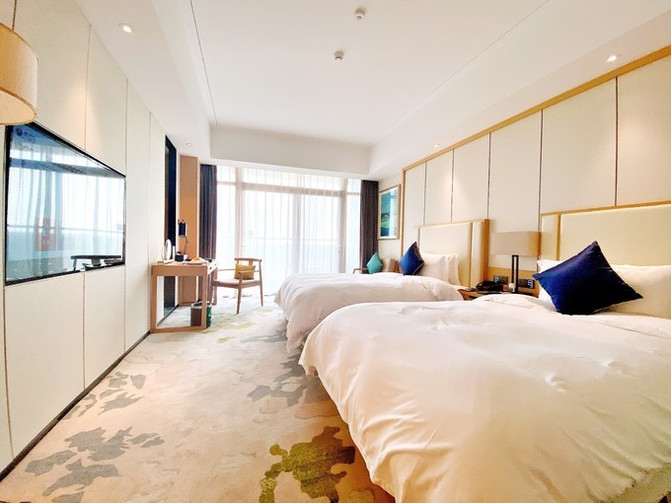


The breakfast, lunch, and dinner in the restaurant are also great. They are all self-service, and breakfast is included in the room rate. The restaurant also provides a friendly reminder to guests, informing them of the most crowded time and the best dishes. This is very user-friendly.



The first time I saw it, I had to wait in line to stay at a hotel. That's right, I really saw it with my own eyes. It was at the Pullman Hotel in Suzhou Zhonghui. The scene at that time was so shocking that I doubted if I had walked to the counter at the airport to change my boarding pass, haha!
Later, when I asked the manager, I found out that this was not just a time of overcrowding. The queue I saw today was a normal occupancy situation. Suzhou Zhonghui Pullman ranked second in terms of volume in the entire Suzhou, and of course, its occupancy rate was also in the top few. The manager did not elaborate on the specific occupancy rate, but we speculate that it is at least 85% or above.
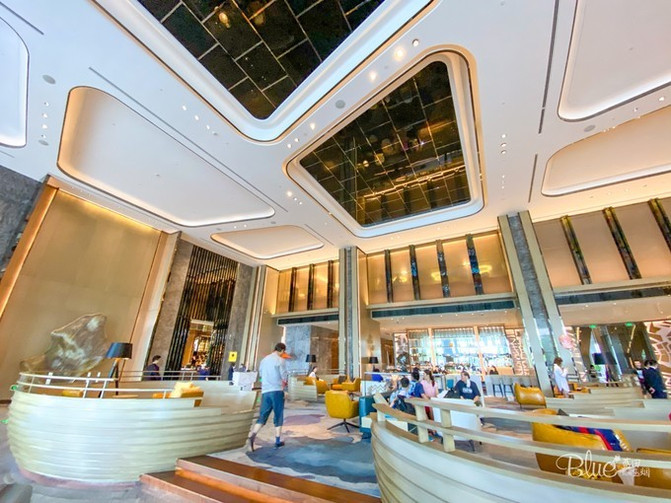






The Pullman Suzhou Zhonghui Hotel is located in the financial center of Xiangcheng District, a convenient transportation hub that provides easy access to major commercial centers and tourist attractions in Suzhou. The hotel rooms are mainly inspired by Pullman's unique innovation, with a modern business style complemented by new Chinese minimalism. The 413 rooms combine comfortable design and technological performance, providing a comfortable stopping place for your journey. Four restaurants with diverse styles offer you a wide range of dining options. A banquet and conference functional area of approximately 2200 square meters, equipped with advanced 360 degree 4D holographic projection technology, brings you a brand new exhibition experience.





The only regret is that on the night I checked in here, I stayed up too late for the photo editing and didn't go to bed until 2am. As a result, I overslept the next day and couldn't have breakfast. It is said that the breakfast here is very nice, so I had to wait until the next time to go.
Murakami Lake House
We didn't check into the village lake house where the Yangcheng Lake beauties have legs. We just went to visit it because the online reviews were very good. It happened to be a good time to stroll here after dinner. The waitress was very enthusiastic and showed us around.




I love the simple decoration style here, as well as the cute little decorations. The pastoral style hits me in the face, and there are also his two mixed race dogs, who can smile and sell cute things. They have made my young girl's heart cute, and I really have the urge to kidnap her.
There is BBQ here, located in the garden of the homestay. It feels like business is good, and the restaurant is full of customers, with grilled skewers at every table. It's probably because the taste is so delicious that the customers are full. Next time you have the opportunity, be sure to give it a try. For a foodie who enjoys traveling and loves food, both food and scenery cannot be let down!
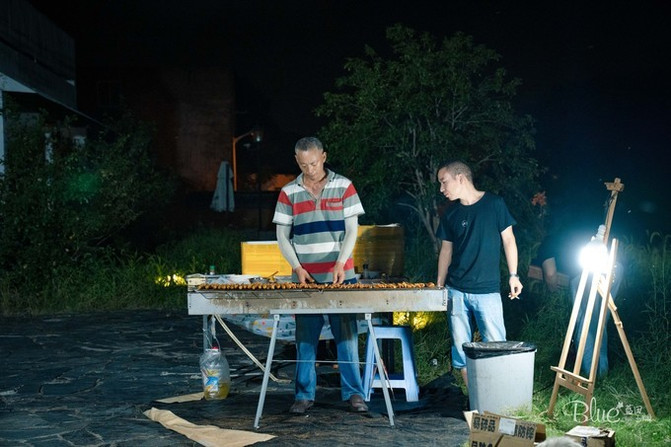



According to the waitress, this village lake house not only has a homestay, but also a large vegetable garden, which grows a lot of seasonal vegetables, pure green and pollution-free organic vegetables. In addition to the vegetables taken from our own restaurant, customers can also rent a small vegetable plot here and plant their favorite vegetables. Children love this kind of activity and are very popular among family tourists.
At night, the vegetable garden was closed, but the ceramic art museum at the homestay was still open, so our group went to visit his family's ceramic art museum again. This is a very elegant place, filled with a variety of pottery, with different shapes and colors, but all of them are pieces of art that are pleasing to the eye and calm to the soul.






The teacher also demonstrated for us once how to turn a pile of mud into a cup or a vase. Our teacher's superb skills amazed us greatly.




Looking at those cute ceramic artworks, little cats, dogs, and animals, they were so cute that I couldn't move my legs anymore. I couldn't make them myself in time, so I tried hard and tried hard. Finally, my boss gave me a cute little white cat, and I left happily with a silly smile, haha.
Reflections written at the end
During these days of sightseeing, Suzhou Xiangcheng has given me a profound experience.
Here, the people are outstanding, the earth is beautiful, and the bells are graceful and graceful,
Having a unique Suzhou imperial kiln golden brick,
With its unique Yangcheng Lake,
With the beautiful scenery of Lotus Island,
With an enviable modern library and cultural palace,
There is also a beautiful new countryside created by using Feng Menglong's former residence as a tourist route,
And various delicious dishes and specialty homestays,
Suzhou Xiangcheng is really worth savoring. If you have the opportunity, you should also go and take a look~~~



Previous Article:48 hour Adventure | Embracing You in a Mediocre Life - Falling in Love with "Heaven on Earth" - Gusu City
Next Article:Dreams in Zhouzhuang | Jiangnan Water Town Possesses Poetry and Distant Distance
